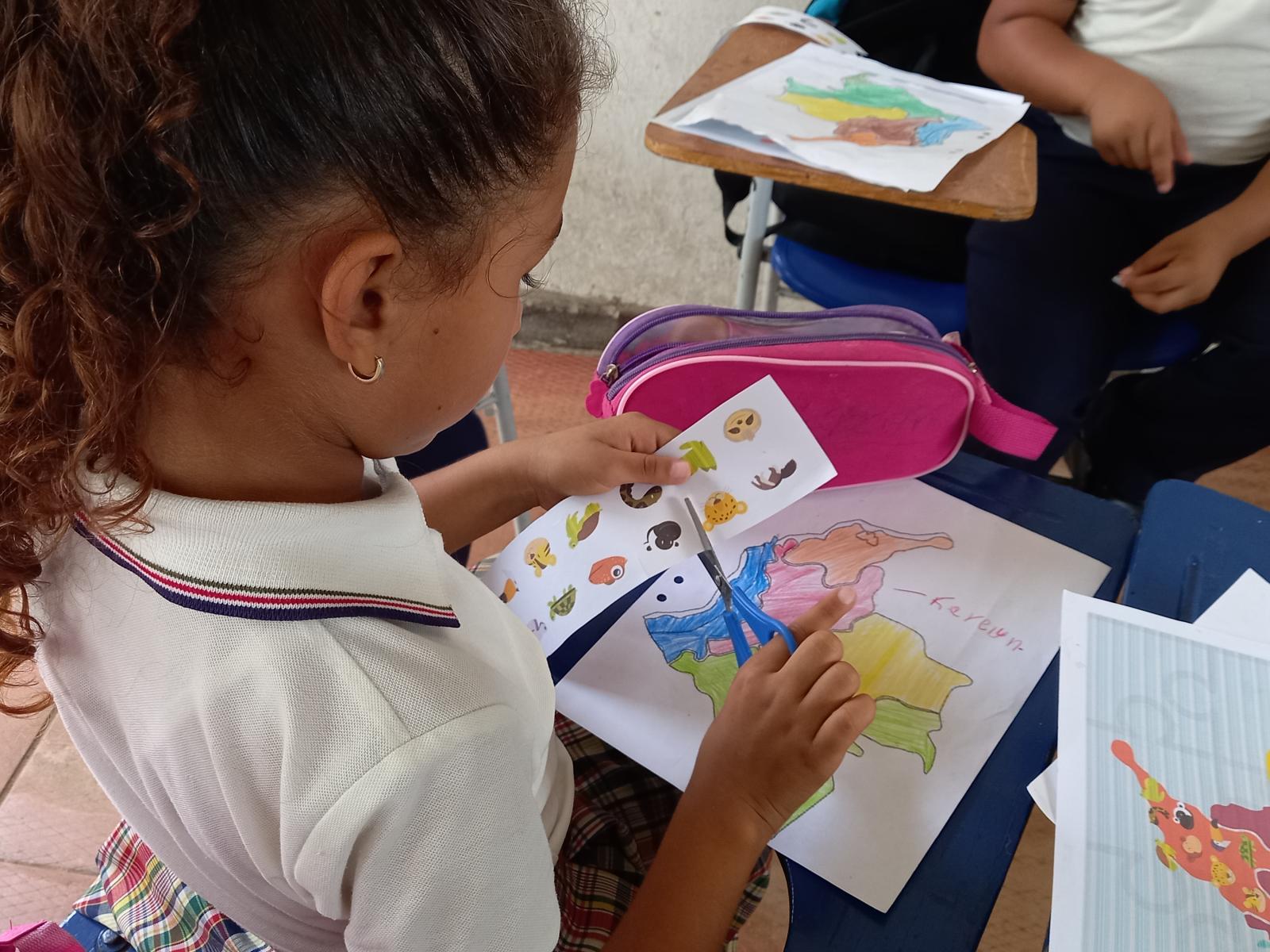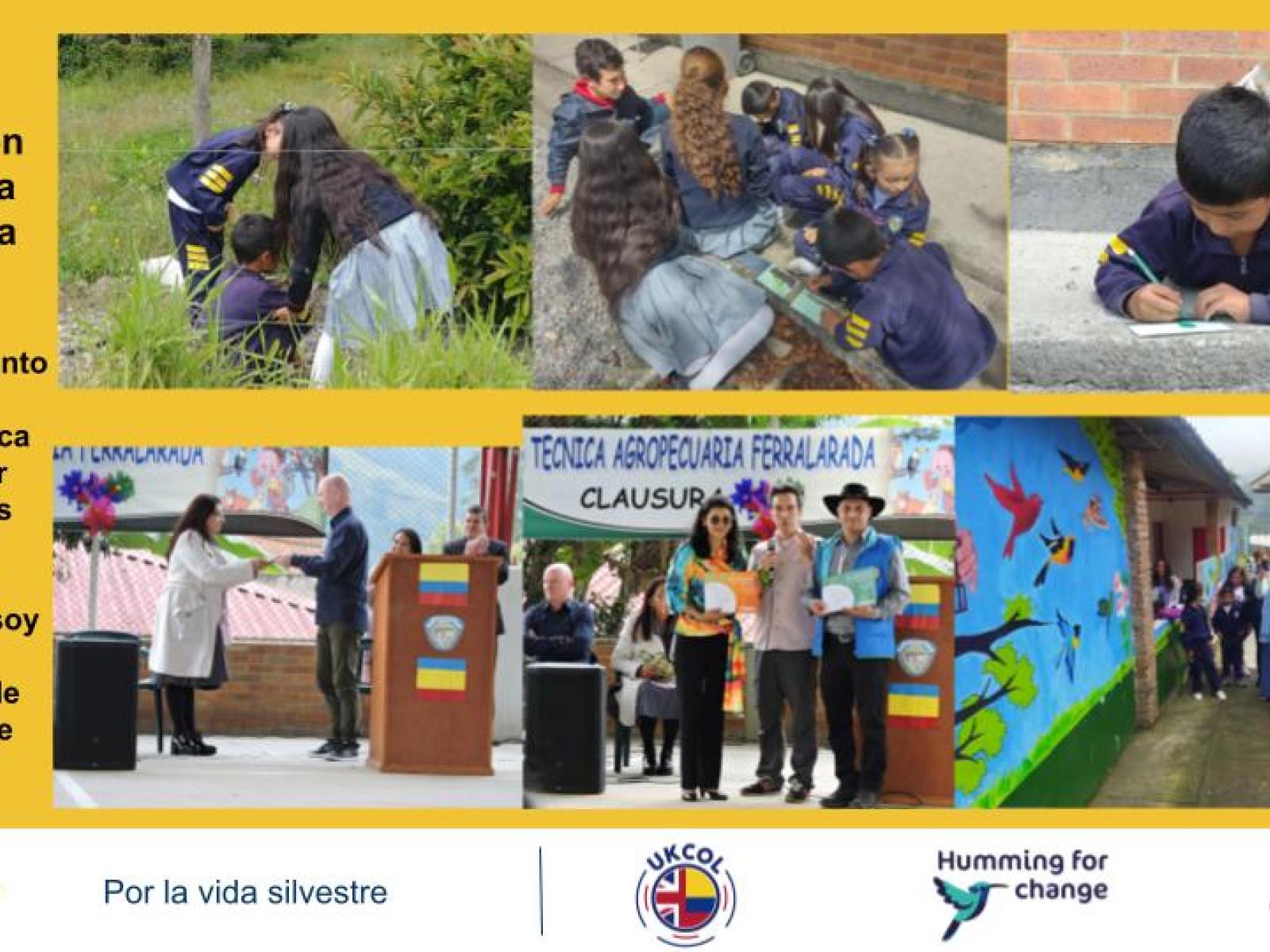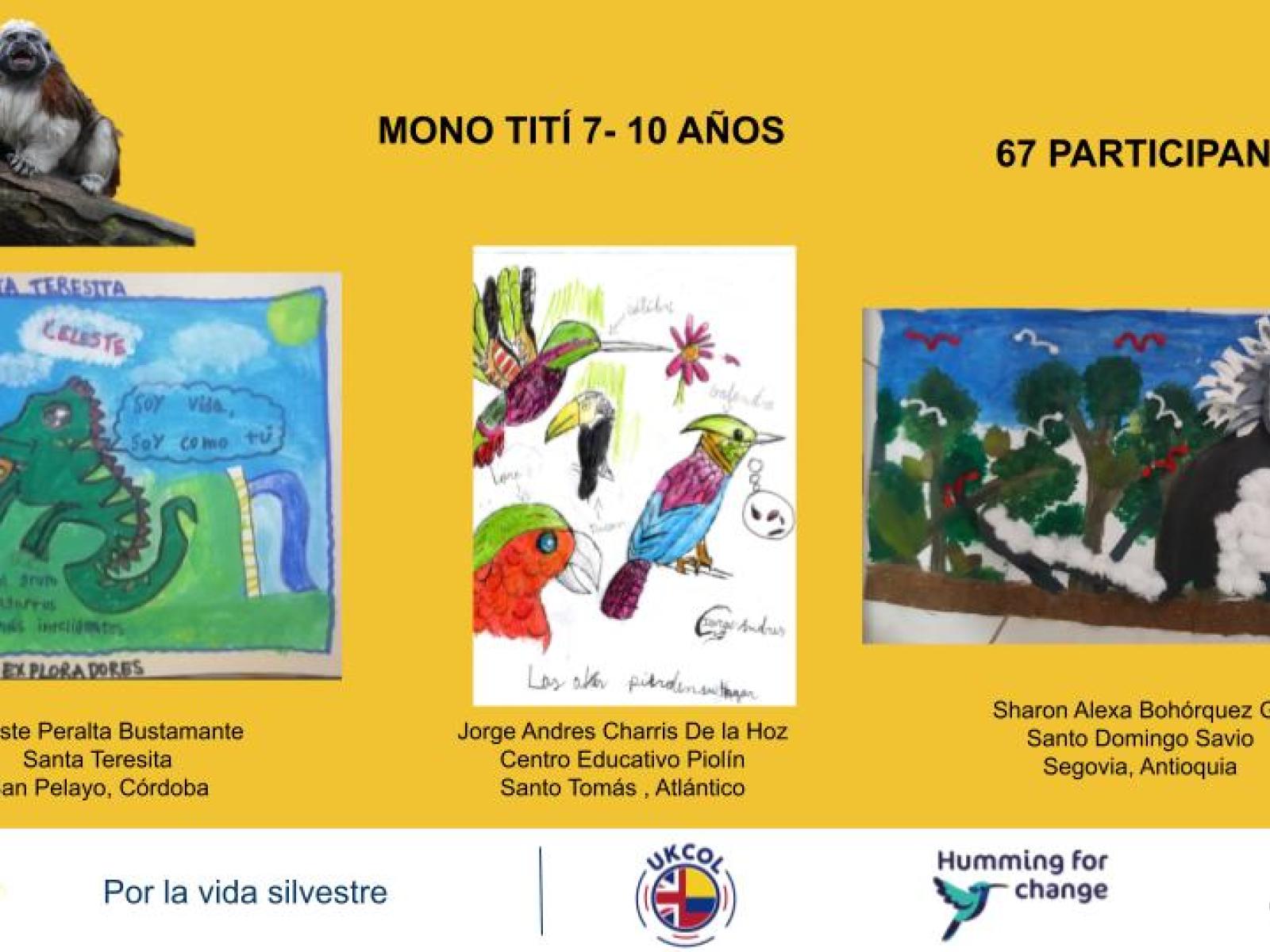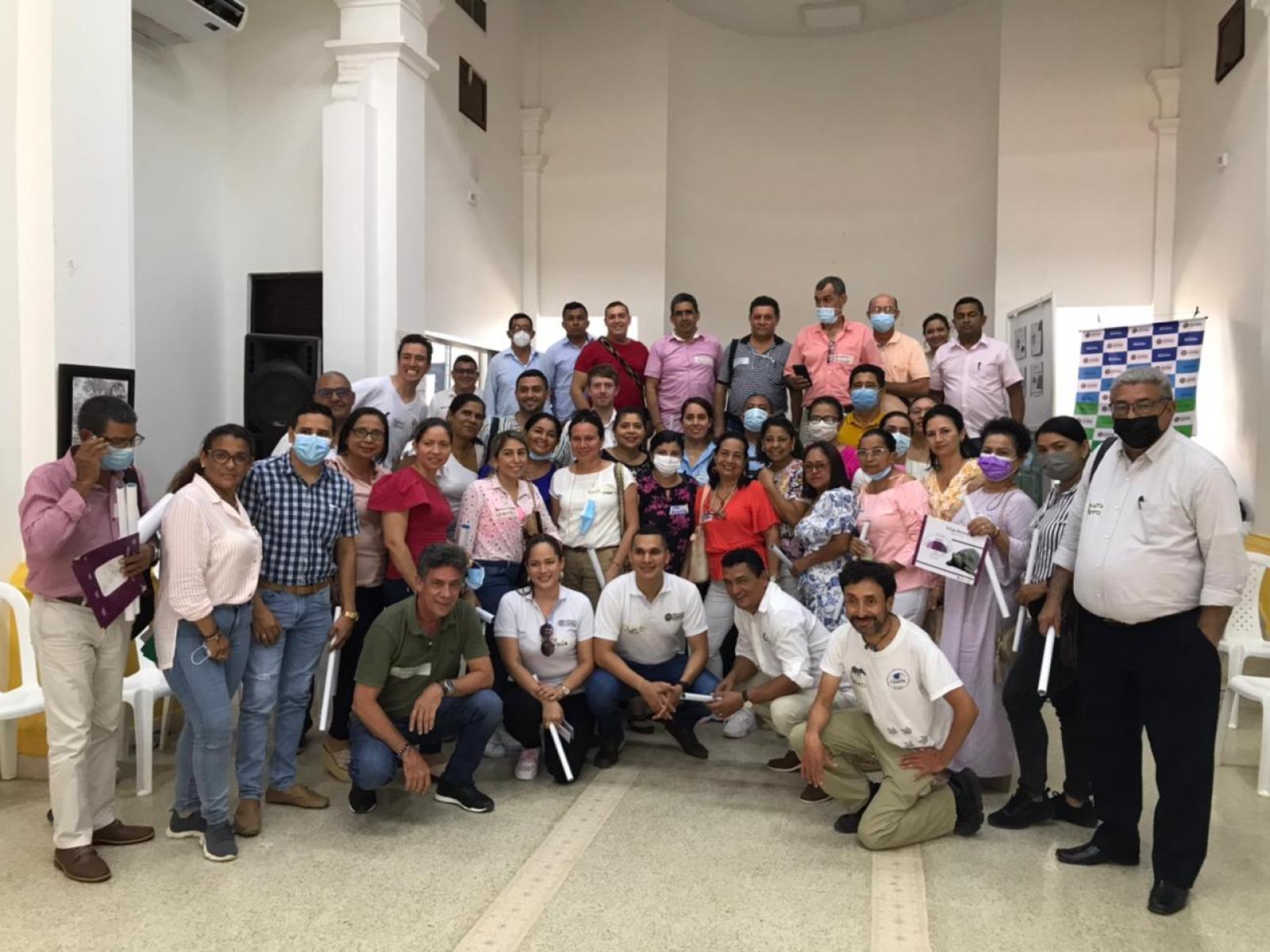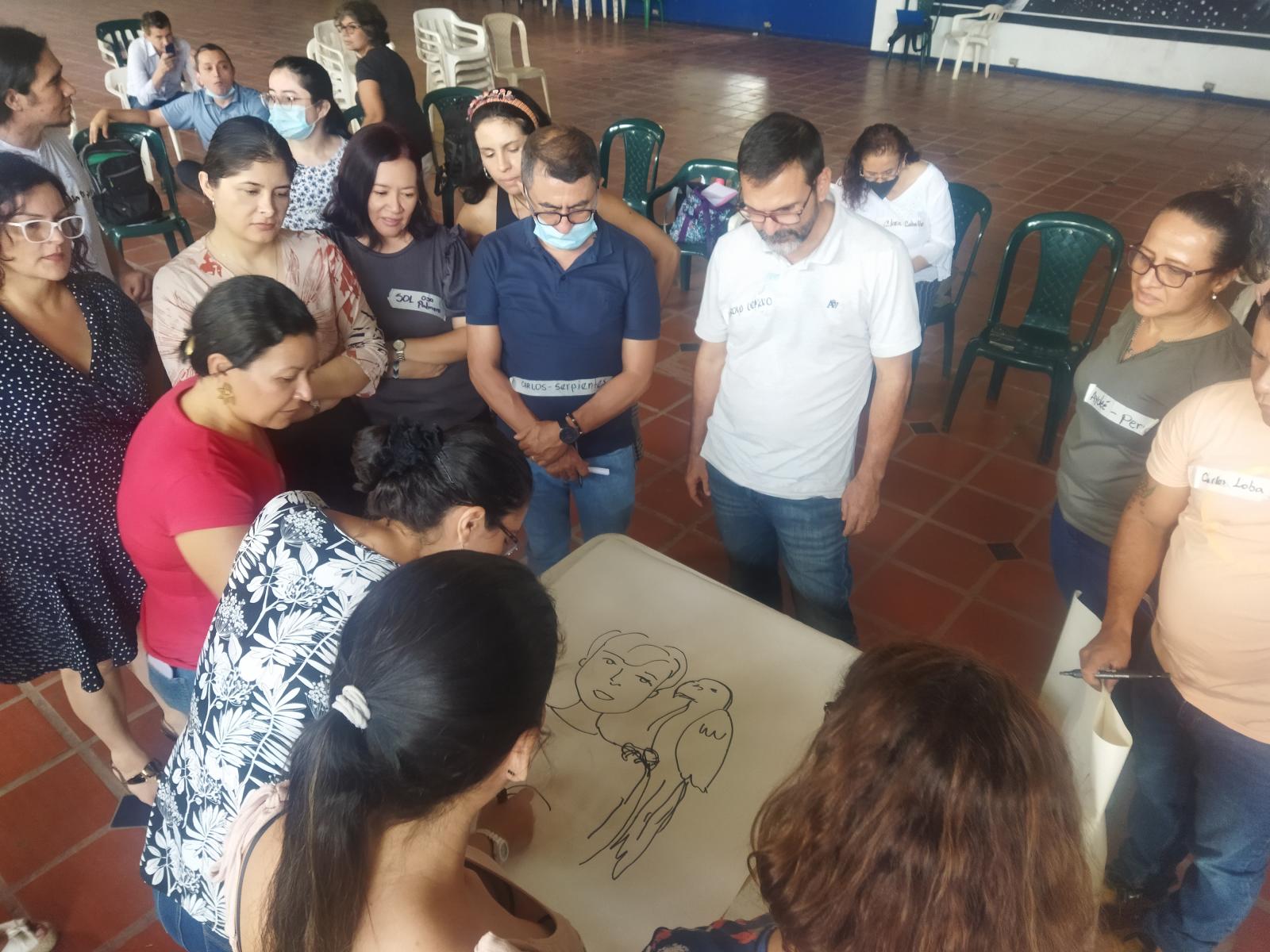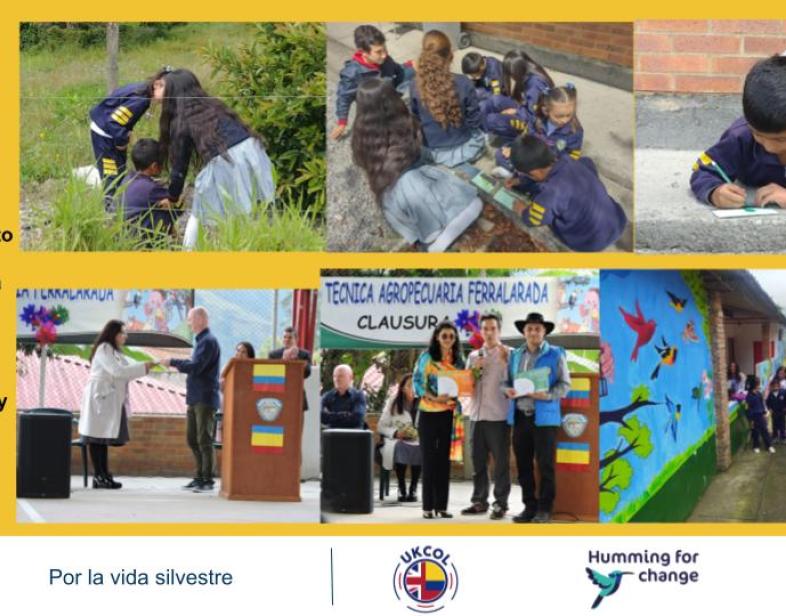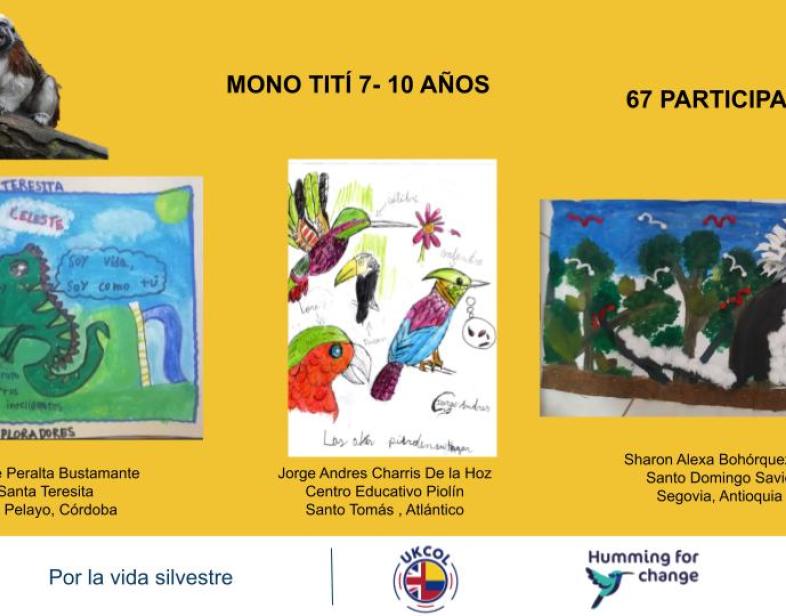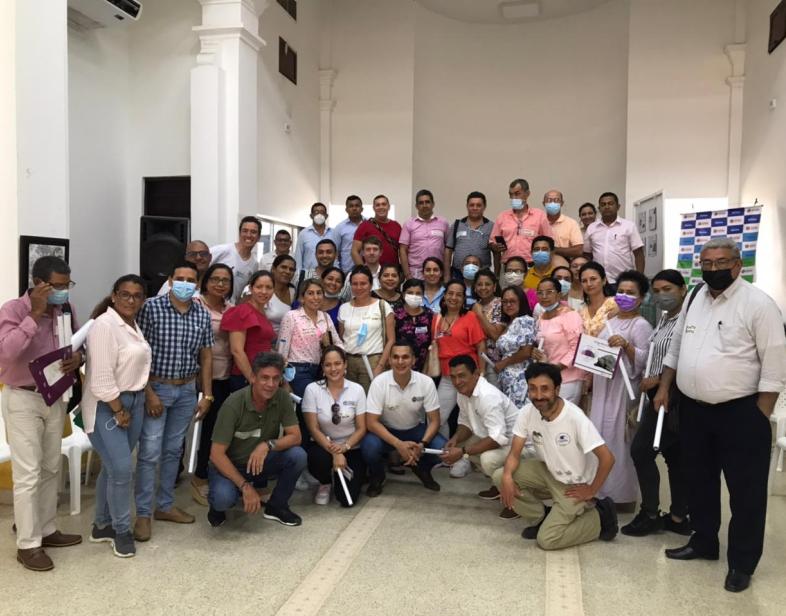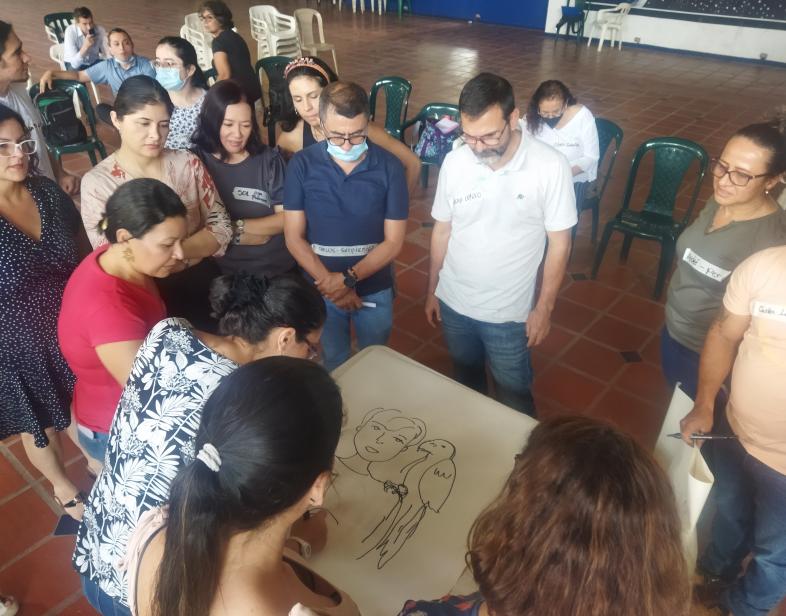An Overview Of Our Solution
Por La Vida Silvestre project aimed to foster a deeper appreciation of wildlife as a crucial component of nature and transform cultural practices that promote the exploitation of wildlife. The project conducted 8 workshops in 7 regions of Colombia and trained more than 400 rural school teachers. It also provided 2 manuals, adapted from WWF international manuals, which highlighted over 30 wildlife species and their ecological and cultural significance. These resources enabled teachers to create nature-based educational activities using species from their local ecosystems or other regions of Colombia and Latin America. The project also launched a campaign that generated over 200 proposals from schools, teachers, and students, showcasing innovative approaches to appropriating wildlife and preventing illegal wildlife trafficking.
- Population Impacted: 850
- Continent: South America
Prénom
Nom de famille
Type d'organisation
Courriel
Analyse du contexte
Colombia ranks second in biodiversity and is among the 12 most megadiverse nations on the planet. As a tropical country, Colombia has a great variety of species that make its natural wealth an asset. According to WWF, animal trafficking is one of the most profitable illegal businesses in the world, and an important cause of biodiversity loss. In Colombia there are several species affected by this problem. According to the Ministry of Environment and Sustainable Development, Colombia has about 31,780 species of animals. Also, according to this entity, an average of 2 wildlife animals are released every hour in the country. This means that around 17,000 of these animals are released annually in Colombia.
The possession, use, and commercialization of animals and parts of wild animals are maintained mainly by cultural tradition in the country. The culture of illegal animal trafficking is normalized, has minimal consequences for those who practice it, and has an increasingly demanding market. In addition, corruption and the normalization of possession or overexploitation of wild animals are common elements in the networks used to maintain the business and involve more people in the chain. Although data from regional environmental authorities on trafficking and cultural causes are not systematized, the problem is evident in these regions due to its high seizures.
Considering this, it is urgent to change behaviors and transform normalized patterns in rural territories where this chain begins. Teachers, as leaders of their communities, are the ones who bring first-hand information to children and families to work for environmental causes. Rural teachers often need more information or new methodologies that would allow them to generate a process of change in their environments. The project targeted them to strengthen their capabilities as active agents in the cultural transformation related to illegal trafficking.
Décrivez la solution technique que vous voudriez voir le public cible adopter.
The project solution focused on Nature-Based Education. The project developed educational manuals to promote the appropriation of biodiversity and wildlife between academic communities. These manuals highlight the problem's cultural and traditional aspects. They also advertise the search for transitions and behavioral changes as part of its solution. For this objective, the manuals present tools and activities that show wildlife not as an economic resource but as a fundamental element of the local ecosystems of the territories.
The manuals were socialized during the workshops to promote the narratives’ transformation and the creation of messages of action to avoid illegal trafficking. In particular, options and alternatives were promoted to avoid using or overexploiting biodiversity, specifically the overexploitation that takes place locally. Teachers and students made use of the manuals to construct the messages and narratives to be presented later in the campaign.
Décrivez votre intervention comportementale.
The project shared with participants a positive and constructive narrative strategy for appropriating the territory's biodiversity and wildlife as a critical element for the conservation of ecosystems and the services they provide. Using maps, diagrams, images and with experiential and outdoor activities, the methodologies encourage wildlife recognition as well as the interconnection and interdependence of systems in the territories. In addition, citizen science was presented as another tool to appropriate and recognize fauna.
The project's solution promotes trafficking as a problem that communities can avoid by recognizing the need to transform some cultural patterns and traditions. It also encourages transitions by presenting alternatives, communicating crucial data about the problem and solutions, and generating local campaigns with which teachers and students can reach local communities to enable them to recognize and address the issue. It also teaches how to communicate our ideas from a proactive narrative that binds others to take action rather than criticizing behaviors rooted in the cultural tradition of the territories.
Leviers comportementaux utilisés
Au besoin, veuillez expliquer comment vous avez utilisé le ou les leviers avec plus de détails.
As for Emotional Appeals, the project used Nature-Based Education tools to generate experiences where participants link knowledge, emotion, and action to understand and address an environmental issue. Project deliverables and activities such as manuals and workshops were designed based on this principle so that teachers can replicate it and encourage transformation among their communities.
Regarding Information and Material incentives, the project generated educational and informative material that teachers can access to promote the appropriation and solution of the problem (i.e., maps, diagrams, and schemes).
As for Social Influence, by working in areas of influence of illegal trafficking, the project provided teachers and students with tools for social and community impact. These tools aim to raise awareness among local communities through education and the urgency of eradicating entrenched trafficking practices.
Décrivez votre mise en œuvre.
Inspired by manuals developed by WWF international on wildlife, the project developed 2 manuals with 5 sections with 15 activities per manual. These manuals aim to promote the recognition of biodiversity and its ecosystem services, understand the causes and consequences of illegal wildlife trafficking, the socio-cultural relations to illicit trafficking, the loss of biodiversity, and citizen science as a tool to address the problem. The manuals were adapted to the Colombian context and the Latin America region, and were designed based on OpEPA's 25 years of experience in environmental education. The project shared the free-to-use manuals with around 800 teachers who participated in activities. Also, teachers can adapt the manuals to their daily contexts, and those of their students strengthen their capacities to apply these materials to each particular case.
In addition, the project held 8 workshops in which participants collectively constructed messages based on the manuals for appropriating biodiversity and wildlife, avoiding using and overexploiting wild animals. Participants implemented the skills acquired during workshops by designing content material to be shared in the educational campaign as a tool for appropriating biodiversity. Participants remarkably endorsed the solution in all the participating regions, from which teachers and students shared their new narratives on claiming biodiversity.
Moreover, it was essential to link the education secretariats of the regions to motivate participation and dissemination of the material, workshops, and campaign. Similarly, implementing online workshops allowed greater access to the project by participants in rural areas. Furthermore, making manuals and project material available online allows greater access to teachers in remote regions.
Regarding limitations, the project faced the need for more time availability of some teachers since their school year schedule limited their time.
Décrivez le leadership de votre solution. Qui dirige la mise en œuvre?
OpEPA is an organization that has been leading environmental education processes for the past 25 years. Through its Nature-Based Education methodology, the organization promotes the empowerment of local actors to connect with nature. In this case, the project empowers teachers, principals, students, and other school stakeholders to take social ownership of wildlife as the focus of work in their communities and prevent trafficking.
The project strengthens local leadership to avoid biodiversity loss and as a channel to work in the communities on cultural changes associated with overexploitation and inappropriate wildlife use.
The project also worked with local education secretariats offering alternatives in their regions, allowing them to approach environmental education differently. Also, to work in learning environments outside their classrooms and take ownership of the biodiversity offered by each territory.
Principaux intervenants et partenaires du programme
Project’s objectives are articulated with the new policies and alliances established at the second High-Level Conference of the Americas on Wildlife Trade, which took place in April 2022 in Cartagena, Colombia. Within the framework of this event, the British Embassy defined lines of action to support the prevention of illegal trafficking in Colombia and, with different allies, established strategies, one of these being this project.
The project is also articulated with the Biodiverciudades initiative of the Ministry of Environment and Sustainable Development, which seeks that cities recognize, prioritize and integrate biodiversity and its benefits towards sustainable regional urban development. It also contributes to implementing the Ministry's National Strategy for preventing and controlling trafficking.
Furthermore, the project involves non-governmental, social, and governmental sectors, private companies, and international cooperation to establish educational guidelines to prevent illegal trafficking. Processes are currently being planned with the education sector and private companies to raise awareness of the problem and outline education projects for the transportation sector, one of the most sensitive in the value chain of illegal trafficking.
Fichier vidéo
Qui a adopté le(s) comportement(s) souhaité(s) et dans quelle mesure?
The project conducted surveys to evaluate its impact on participants' knowledge about illegal trafficking, biodiversity loss and appropriation, citizen science and a new wildlife conservation narrative. Analyzing the survey responses, participants increased their knowledge mainly in citizen science as a tool for recognizing local biodiversity. Workshops' and methodologies’ relevance was also evaluated, obtaining high satisfaction levels from more than 400 teachers who participated in the workshops. Also, participants can share digital content on an educational platform on how they are implementing the acquired skills. Other teachers and the OpEPA team provide feedback on the activities carried out. Finally, through the campaign, participants shared their personal and school experiences to transform the narrative from one of illegal trafficking to one of ownership of biodiversity. Students, teachers, and other stakeholders from educational institutions submitted more than 200 proposals.
Quel a été votre impact sur la pollution de l'eau?
The project aims to raise awareness about illegal trafficking through transforming narratives about the appropriation of biodiversity. During the workshops, the participants highlighted the importance of conserving ecosystems, generating citizen science groups in their territories, recognizing wild birds, creating wetland conservation groups, and developing cultural work to prevent illegal trafficking. In this way, the project offered tools to strengthen participants' conservation initiatives. Furthermore, the project made it possible to visualize actors in the territories who work in conservation through formal education and to provide more resources to continue this work.
Quel a été l'impact de votre solution sur les problèmes d'équité?
The project mainly targeted rural public schools in the prioritized regions that need easy access to this type of information. In the same way, populations of the municipality of Quibdó in the department of Choco and Leticia in the department of Amazonas, which have Afro-descendant and indigenous people among their teachers, students, and other school actors, participated in the project. In the third chapter of one of the manuals, one of the situations mentioned to exemplify the problem of illegal wildlife trafficking is subsistence hunting and fishing by peasant, indigenous, and Afro-descendant communities, which has transcended animal trafficking. Concerning this, the project shared alternatives with the communities to avoid these illegal practices.
Quels étaient les avantages sociaux ou communautaires de votre solution?
Participants’ empowerment from remote communities in rural areas through capacity building, its implementation during the campaign, and its articulation with the education secretariats generated key community and social benefits. For example, as a result of the collaboration between participants and secretariats within the framework of the project, the latter will support local project design to prevent wildlife trafficking and promote the appropriation of biodiversity in their territories.
Quels ont été les avantages connexes de votre solution par rapport au développement durable?
The project strengthened and made visible sustainable development initiatives present in the territories. In particular, the campaign developed by the project disseminated initiatives designed by local participants on ecotourism with bird watching, appropriation of wetlands and citizen science, and educational texts on local fauna.
Fichier vidéo
Durabilité : Décrivez la durabilité économique de votre solution.
The sustainability of the project depends on external resources from international cooperation. OpEPA and representatives of the Humming for Change environmental education program of the British Embassy are generating strategies to implement these programs on a larger scale and obtain more outstanding governmental support. In addition, OpEPA is constantly looking for calls for proposals that could fund future activities. The organization also regularly seeks opportunities to present the results and experiences of the project, aiming to disseminate the manuals and workshops to other rural regions of the country that face illegal wildlife trafficking.
Retour sur investissement : Combien a coûté la mise en œuvre de ces activités?
£17,000 GBP were invested for the design and creation of the manuals, the implementation of 8 workshops, 3 face-to-face and 5 virtual, monitoring of the project, development of the educational platform and implementation of the campaign. With this budget, 400 teachers and 120 children from more than 30 schools were directly impacted. 400 additional teachers and 30 additional students received key information throughout the project. In addition, the manuals are freely accessible and can be shared with other teachers and schools, and the network of schools established under the project can be expanded in a second phase to include behavioral changes related to biodiversity loss (deforestation, pollution, climate change), and land use changes.
Comment pourrions-nous reproduire cette solution ailleurs avec succès?
The outputs developed, such as the manuals, educational platform, and the content of the workshops can be adapted to any local context. OpEPA has previously made adaptations to its outputs and methodologies to disseminate them in regional scenarios at the Latin American level. Considering this, in order to replicate this solution in any other country in the region, it is essential to contact local actors in each territory, such as the education secretaries, to articulate actions and strengthen the network of schools. Likewise, it is crucial to link local or regional public environmental entities that prevent illegal wildlife trafficking and engage them in Nature-Based Education processes promoted by the project.
